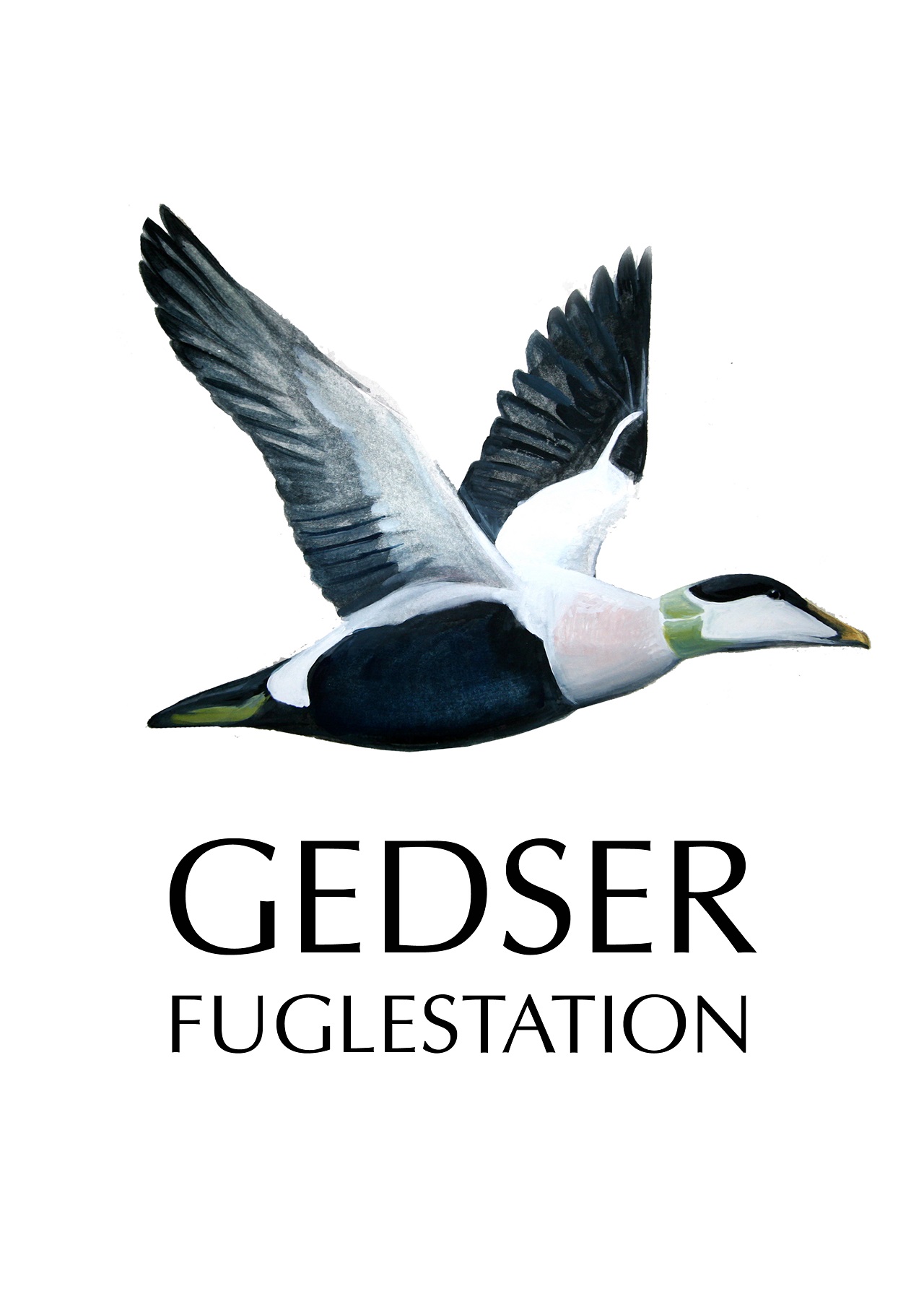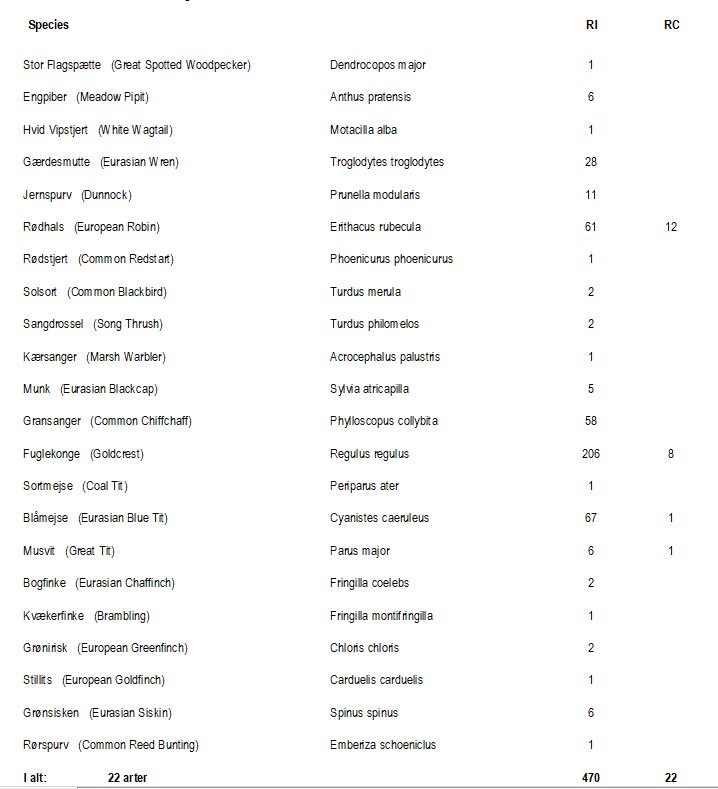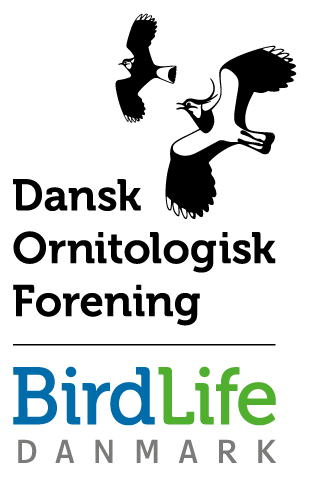Gedser Fuglestation Blog
Her på Gedser Fuglestations blog bringes korte nyheder i dagbogsformat om hændelser på fuglestationen.
The busiest day yet
Ringmærkningen/The ringing: The morning started with a new team: Susanne, Lise, Théo and I, Hanelie. It was definitely a challenge for us, but we were capable to handle it very well: The nets were full of Goldcrests “Fuglekonge” - the data is now entered and we got to a total of 206. In the first rounds, there were also quite a lot of Chiffchaffs “Gransanger”, in total we had 58 today and also more Robins “Rødhals”, than in the last mornings, in total 61. In the last mornings I got the feeling that Bluetits “Blåmejse” are late risers, we also had a rather good number of 67 but they mainly started coming from 10:00 on. We closed the nets in the garden after standard time but opened some nets at the pond and had first sound for Pipits and then for Swallows on. We caught some Meadow Pipits “Engpiber”, Swallows did not come to our sound but instead we found a Siskin “Grønsisken”, a White Wagtail “Hvid Vipstjert” a Reed Bunting "Rørspurv" and a Goldfinch “Stillits in the net.
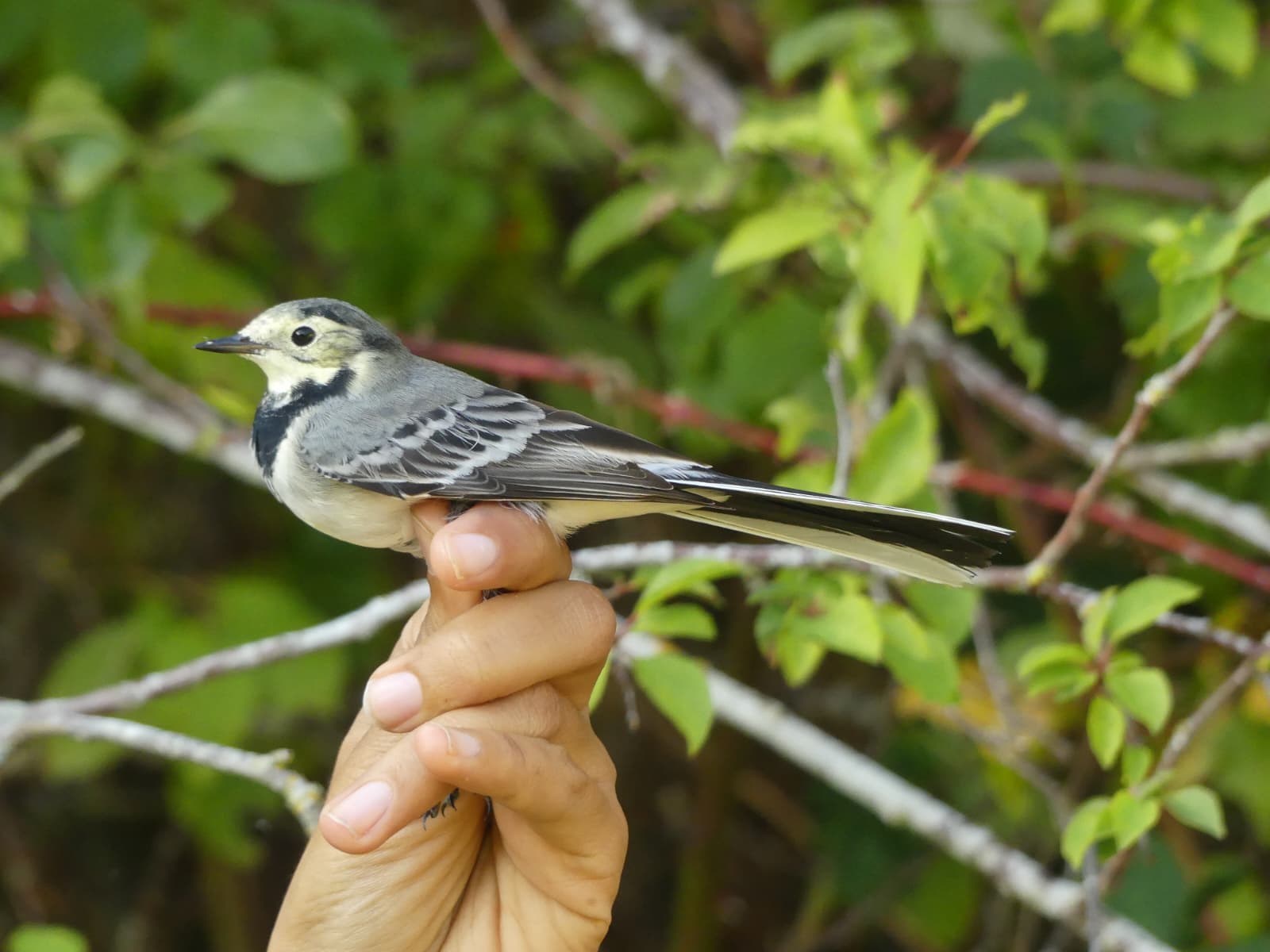 White Wagtail "Hvid Vipstjert".
White Wagtail "Hvid Vipstjert".
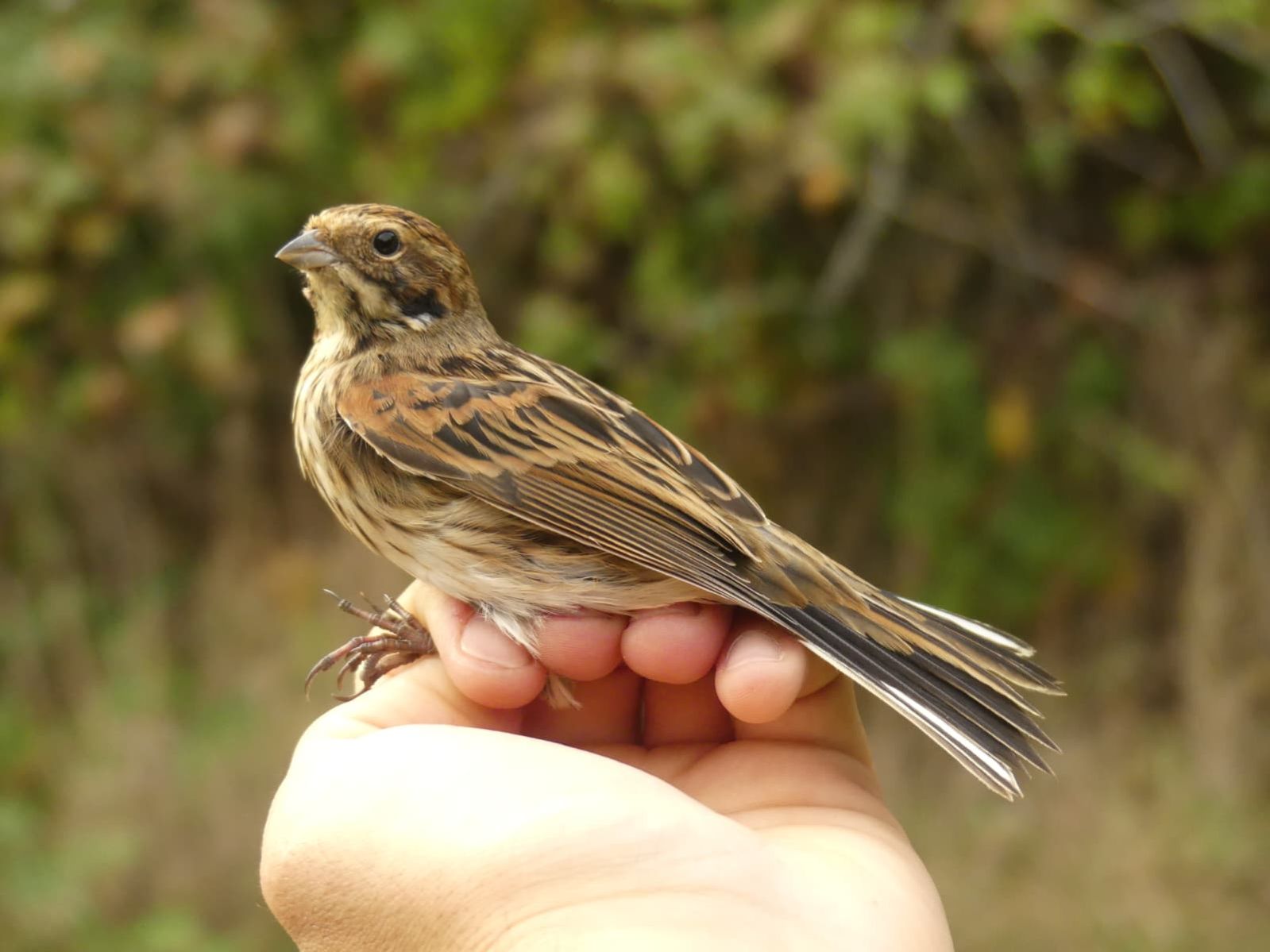 Reed Bunting "Rørspurv".
Reed Bunting "Rørspurv".
In the afternoon, Mads and Tina came and brought us home made Gammeldags æblekage and we all sat together outside and enjoyed the cake and maybe one of the last days in the year when it was nice to sit outside. Now we are excited about what to expect for tomorrow after today's 470 birds.
Trækket på Odden: This morning was beautiful and calm out on the point. It was my first day back counting migration in ten days and it was amazing to see how much has changed in such a short time. We saw far fewer terns and gulls, whereas now the Common Eiders (Ederfugl; Somateria mollissima) are in full migration.
What a change, from seeing them all resting and feeding on the beach to flying past in the thousands! It was interesting to note that currently more males than females (or female-types) are migrating – we expect to see more females migrating as the season continues. Such beautiful birds, they almost look like they have been finely painted. I’m very curious to continue observing the changes in species over the next two weeks or so!
We were treated to an Arctic Skua (Almindelig Kjove; Stercorarius parasiticus) quite close to shore which was really special. Its sharp tail and pale patch around the neck indicated that it was an adult bird. We felt very lucky to see it so close and have a good chance to look at it, as they often appear as tiny dark specks in the distance.
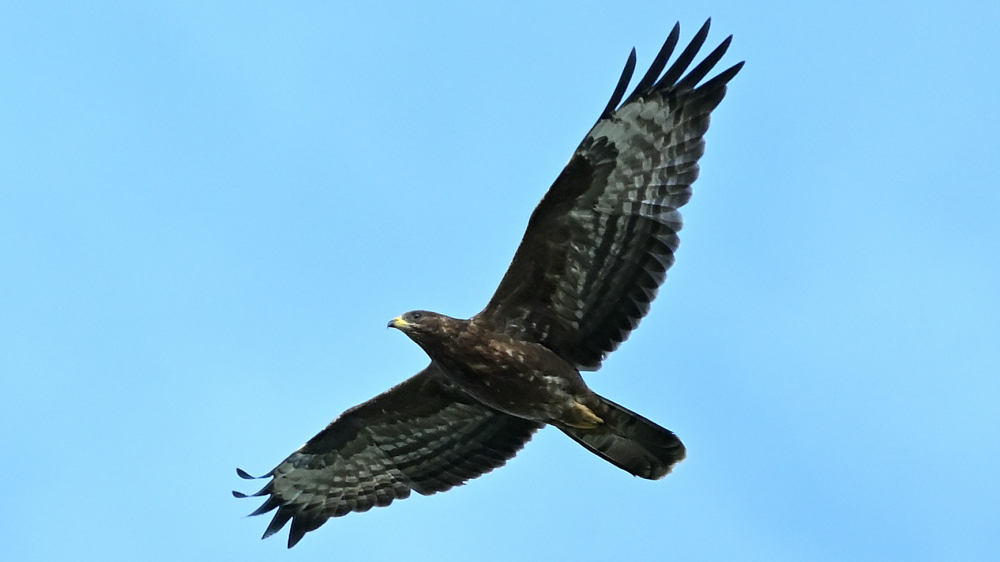
As for raptors, there was quite a nice migration of Red Kites (Rød Glente; Milvus milvus) early in the morning, with a group of 26 heading off after roosting together for the night (we assume). We had several more pass overhead during the day. We had one Honey Buzzard (Hvepsevåge; Pernis apivorus) migrate, possibly the last for the season – we’ll have to wait and see! We were pleasantly surprised at the end of the session by three White-tailed Eagles (Havørn; Haliaeetus albicilla) circling over the house, however it appeared they were just local birds, with only one migrating.
Although not migrating, three local Oystercatchers (Strandskade; Haematopus ostralegus) also passed by – they are just getting a mention as one of my favourite birds and because they are always lovely to see! In total today, we observed 4114 individuals from 33 species. A very nice day overall, and we’re looking forward to another sunny day tomorrow before the weather turns on the weekend.
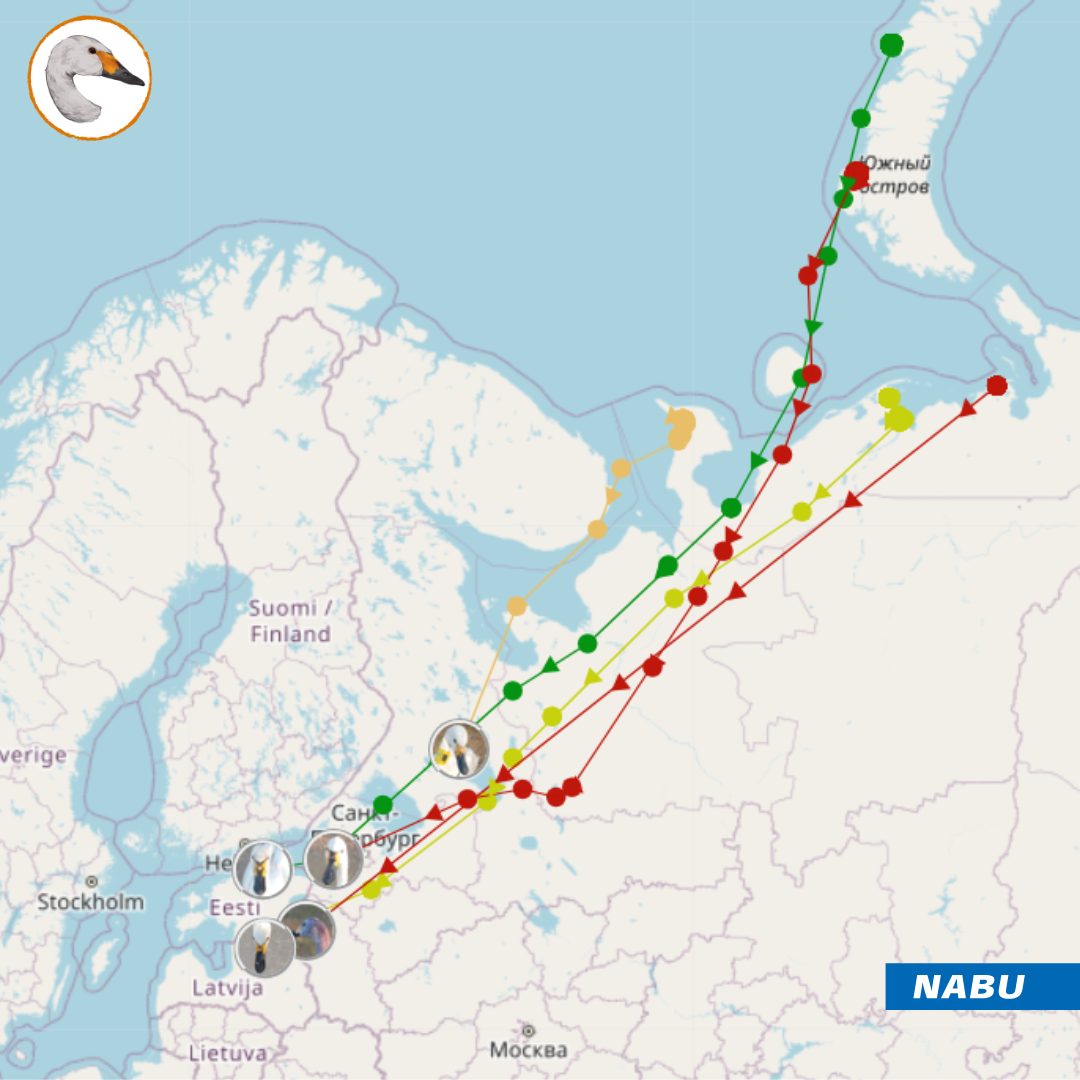 Vi er begyndt at kigge efter svaner med gule næb, men har ingen set endnu. Nu ser det ud til, at det kan ske en af de nærmeste dage. Kortet fra vores kolleger i tyske NABU viser, at nogle Pibesvaner (Cygnus columbianus) med gps-sendere er nået til Estland og Letland efter at have fløjet et par tusinde kilometer fra deres ynglelokaliteter i det nordligste Rusland.
Vi er begyndt at kigge efter svaner med gule næb, men har ingen set endnu. Nu ser det ud til, at det kan ske en af de nærmeste dage. Kortet fra vores kolleger i tyske NABU viser, at nogle Pibesvaner (Cygnus columbianus) med gps-sendere er nået til Estland og Letland efter at have fløjet et par tusinde kilometer fra deres ynglelokaliteter i det nordligste Rusland.
Se alle dagens observationer fra Gedser Odde i DOFbasen.
Moths: By far not as many moths as birds, only six different species. I will show Sunaria circellaris "Circel-jordfarveugle", again a nice one in autumn colors.
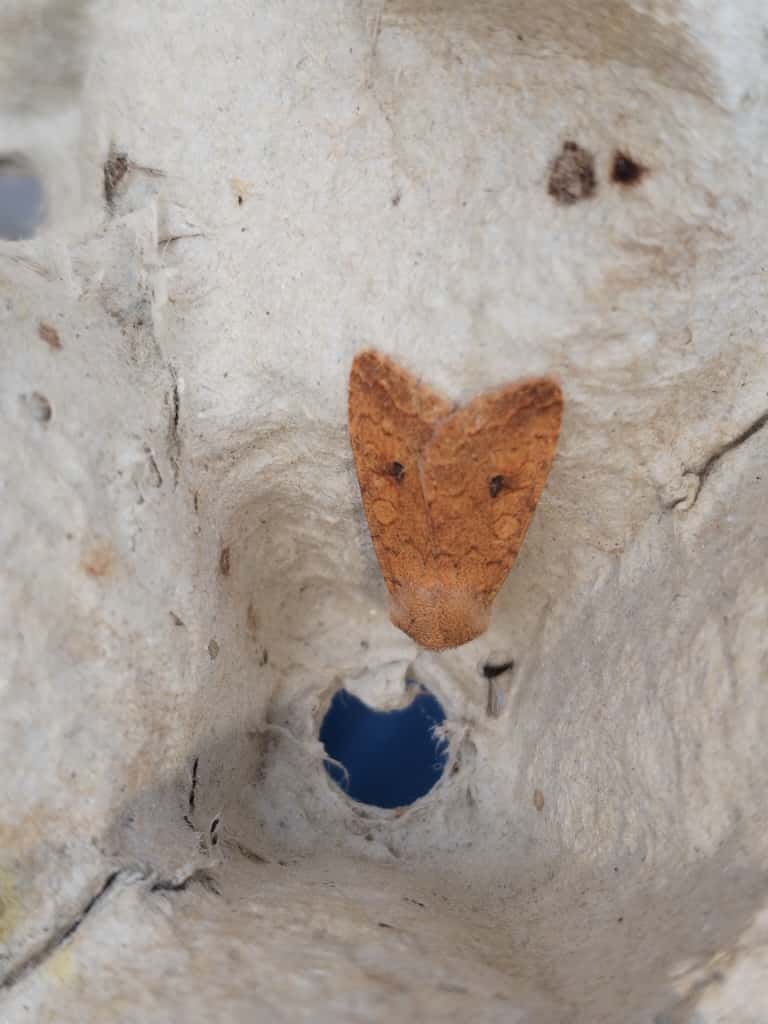 Sunaria circellaris "Circel-jordfarveugle".
Sunaria circellaris "Circel-jordfarveugle".
Folk på stationen: Lise Mastrup, Hanelie Sidhu, Grace Marsh, Susanne Primdahl, Théophile Fontaine, Ole Friis Larsen
